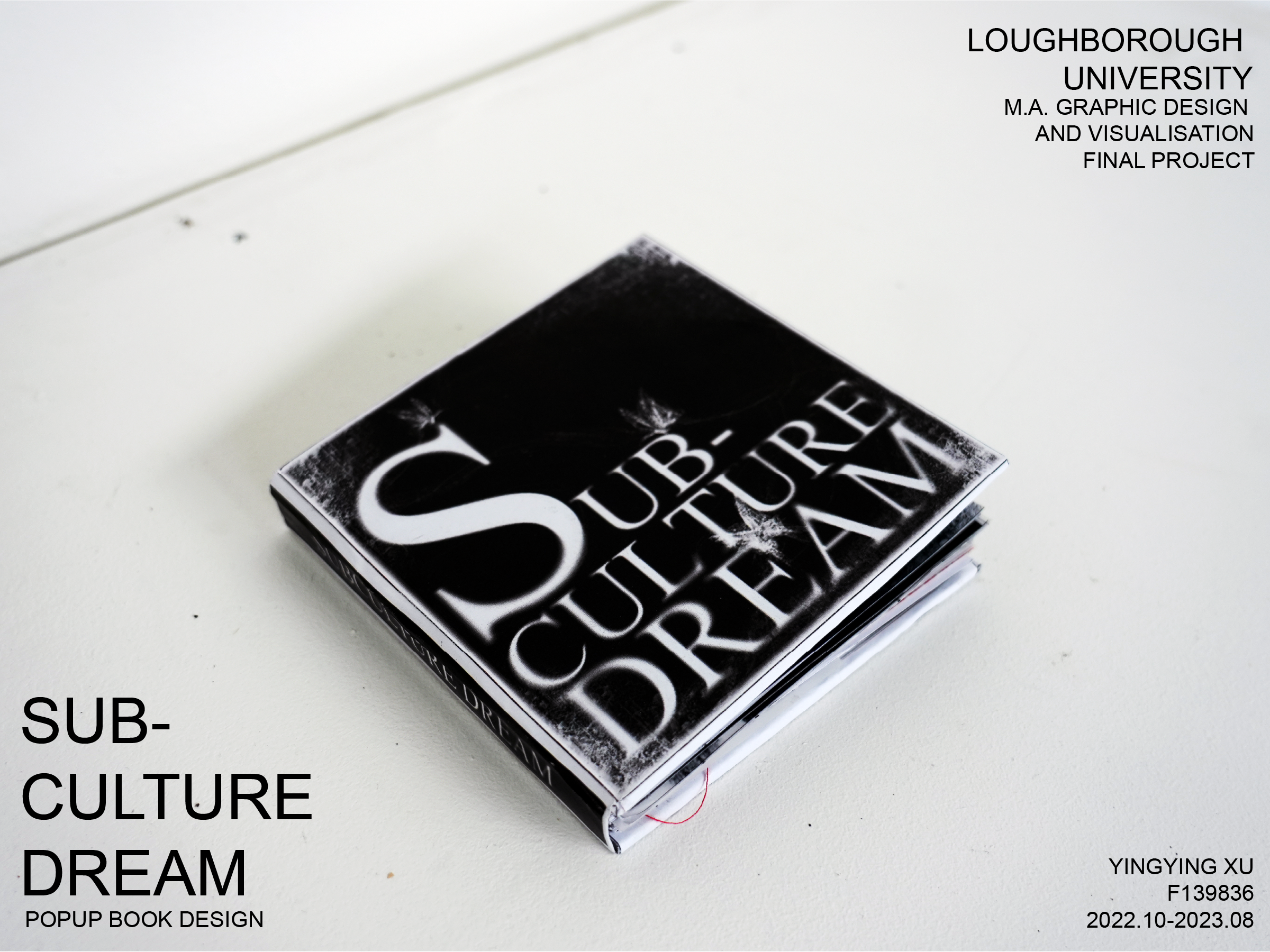Final Project
Subculture Dream
This project is about discrimination and prejudice against subcultures and subcultural groups. In this project, Yingying wants to tell a story about how, in the 21st century, we are told that we are in a better, more peaceful and perfect time. However, this is not the case, and injustices are still happening to these subcultural groups.
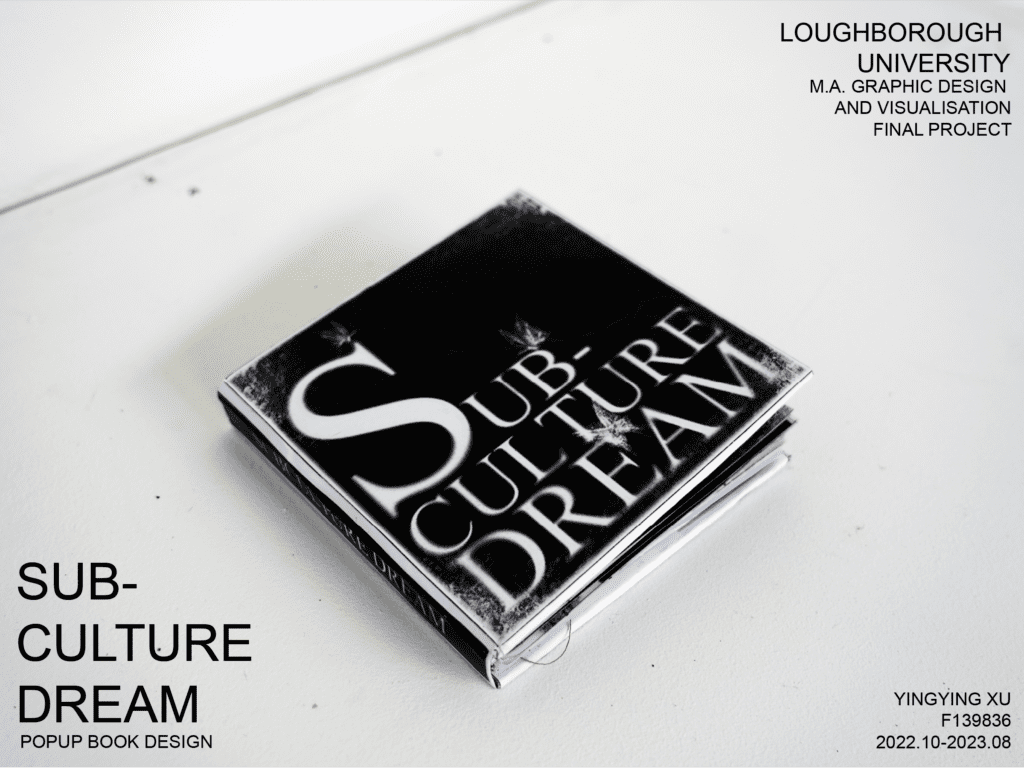
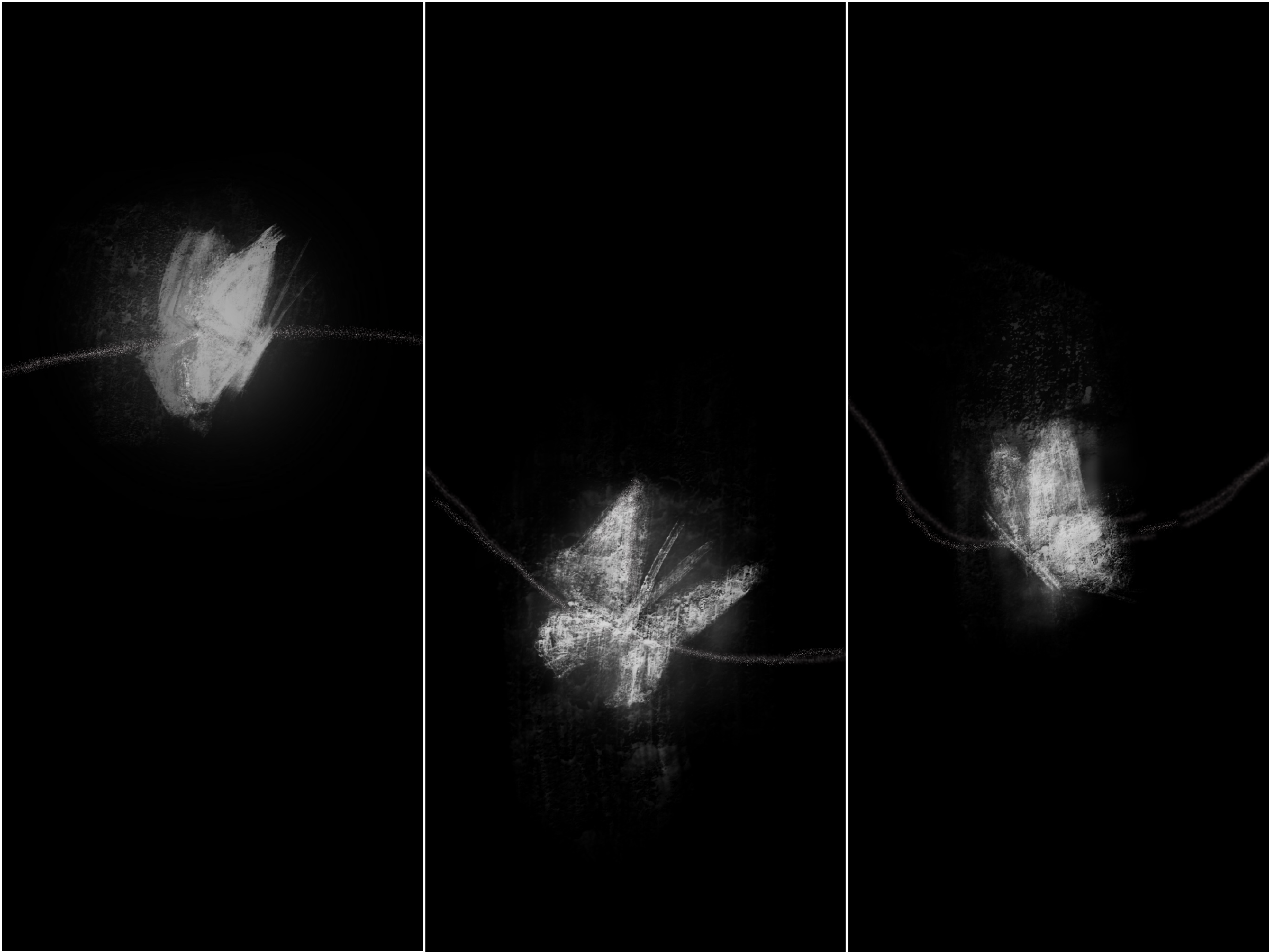
Introduction
In this book, Yingying uses dreams to represent a better world without discrimination and prejudice. And the reality is not that nice. She uses butterflies to represent subcultural groups, from the traditional Chinese story of Zhuang Zhou’s dream of a butterfly. In the story of Zhuang Zhou’s vision of a butterfly, Zhuang Zhou turns into a butterfly in his dream, and when he wakes up, he can’t tell whether it’s a reality or a fantasy. She thinks this is similar to the situation of subcultural groups in mass society. Everyone tells us that our world is lovely, while the truth is awful. So, she doesn’t know if we are in the real world or a dream.
Part Ⅰ
The book is divided into three main parts; the first is about how “I” and the ordinary people around me would also be part of the subculture members.
There are three layers on this page.
They are the “I” of the natural world printed on cardboard. The “I” of the subculture dream printed on acid paper and the thread that connects the drive to the real world. Yingying sewed the pages with a red line, but the real “me” underneath can still be seen through the dream world that the acid paper is trying to express.
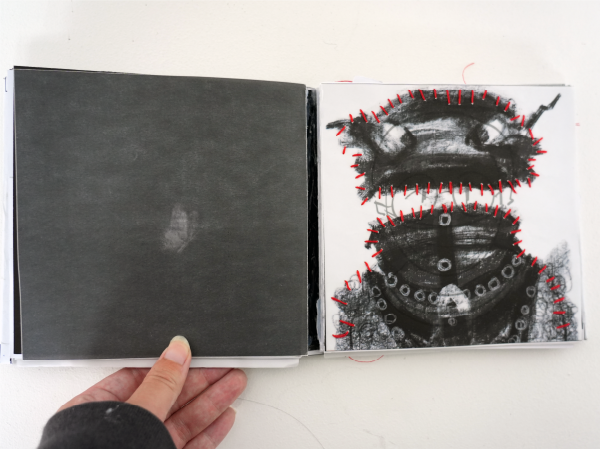
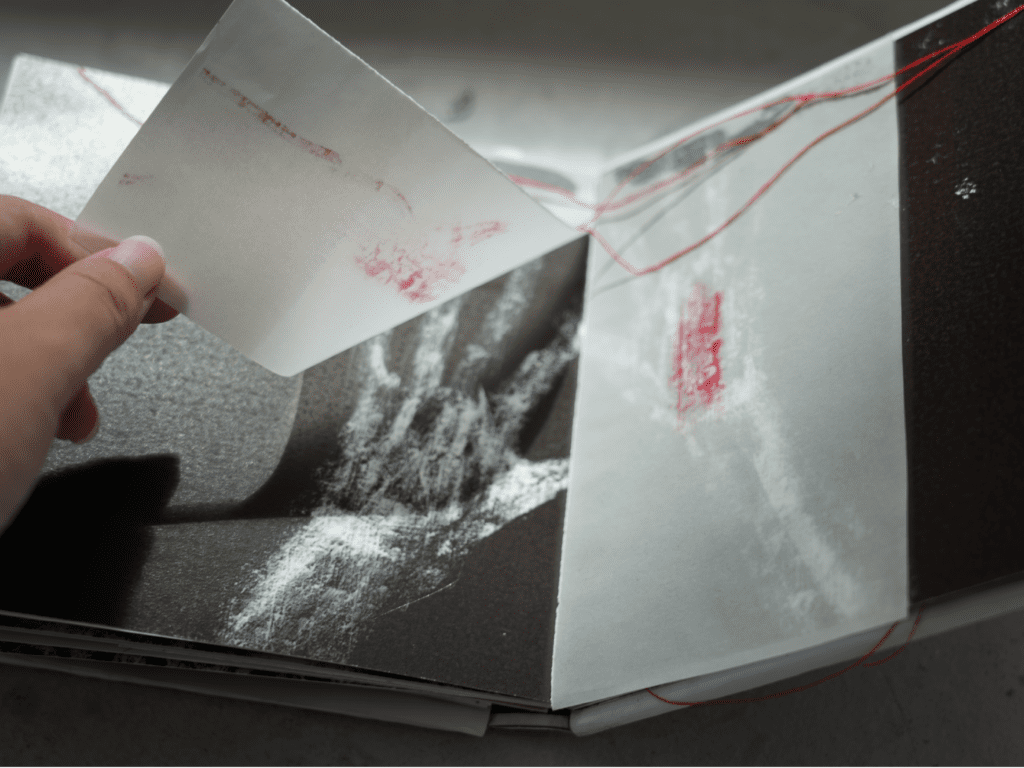
Part Ⅱ & Ⅲ
The second part of the story is mainly about some of the injustices that subcultural groups suffer in reality. Yingying used some popup programs to make them more interesting.
The last part is about how we can’t tell if we’re in a reality or a dream. Yingying used acid paper interspersed with plain paper to represent it.
Video- Subculture Dream- MA final project
This is a film in which Ying recorded herself flipping through the entire book and showing all the interactive devices and mechanisms in this pop-up book. A soundtrack does not accompany the film and retains the most elemental sounds of flipping through the pages of the book, as well as the sounds of people walking in the aisles, to recreate the most realistic reading of the book. They were recorded on a mobile phone, iPhone 13.
More photos
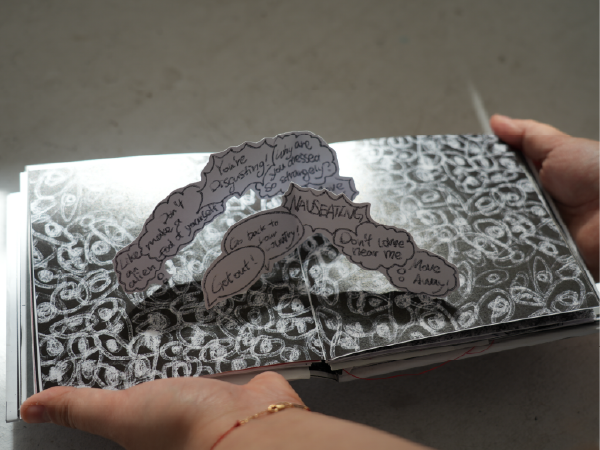
This image is a scene that introduces discrimination with many eyes in the background, representing them staring impolitely at the subcultural group. This is the mainstream attitude towards subcultural groups, and when you turn the page, many discriminatory and prejudicial language and ideas jump out at you. This includes telling the subcultural group to go away, get out, get out of their place.
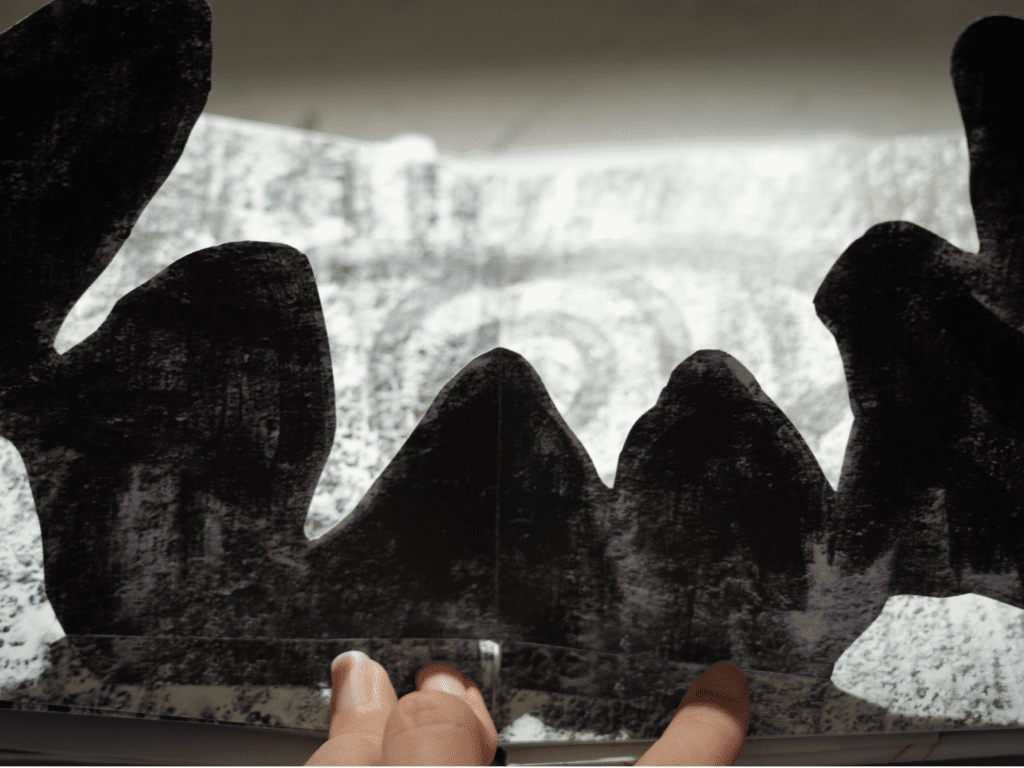
This is also a page from part two that uses the contrast between the black person in the front and the white eyes in the back to show the oppressive feelings that discrimination and prejudice bring to subcultural groups. When the page is turned, the person dressed in black will stand up quickly.
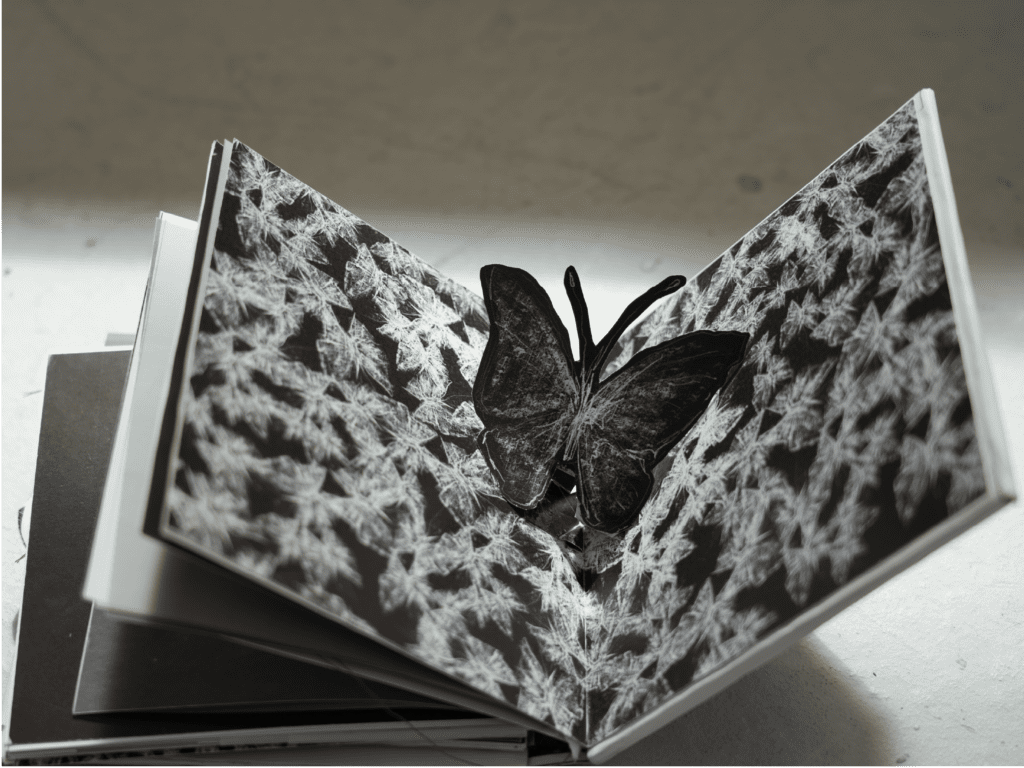
This picture is from the last page of the whole book; when you turn the page, the butterflies will pop up. Ying Ying wants to use this page to express her hope that subcultural groups can escape the general public’s discrimination and prejudice. At the same time, the background of all butterflies also implies the hope that in the future, subcultures can be accepted by the mass society so that the world can become perfect.
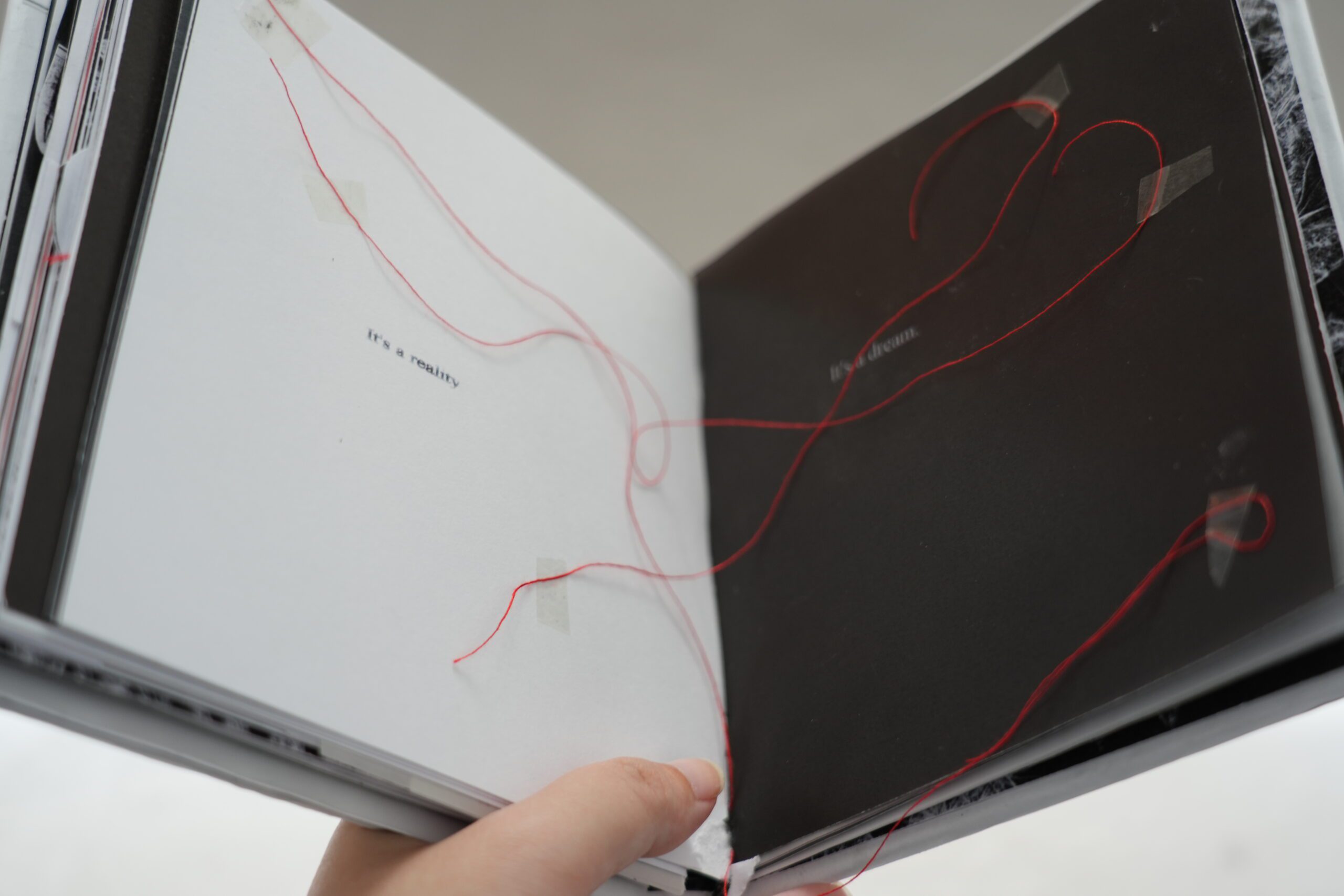
This is the last part of the whole book.
The main hope is to show the subculture group’s confused feeling of being between a real and a dream world fantasy, unable to tell whether it is a dream or reality.
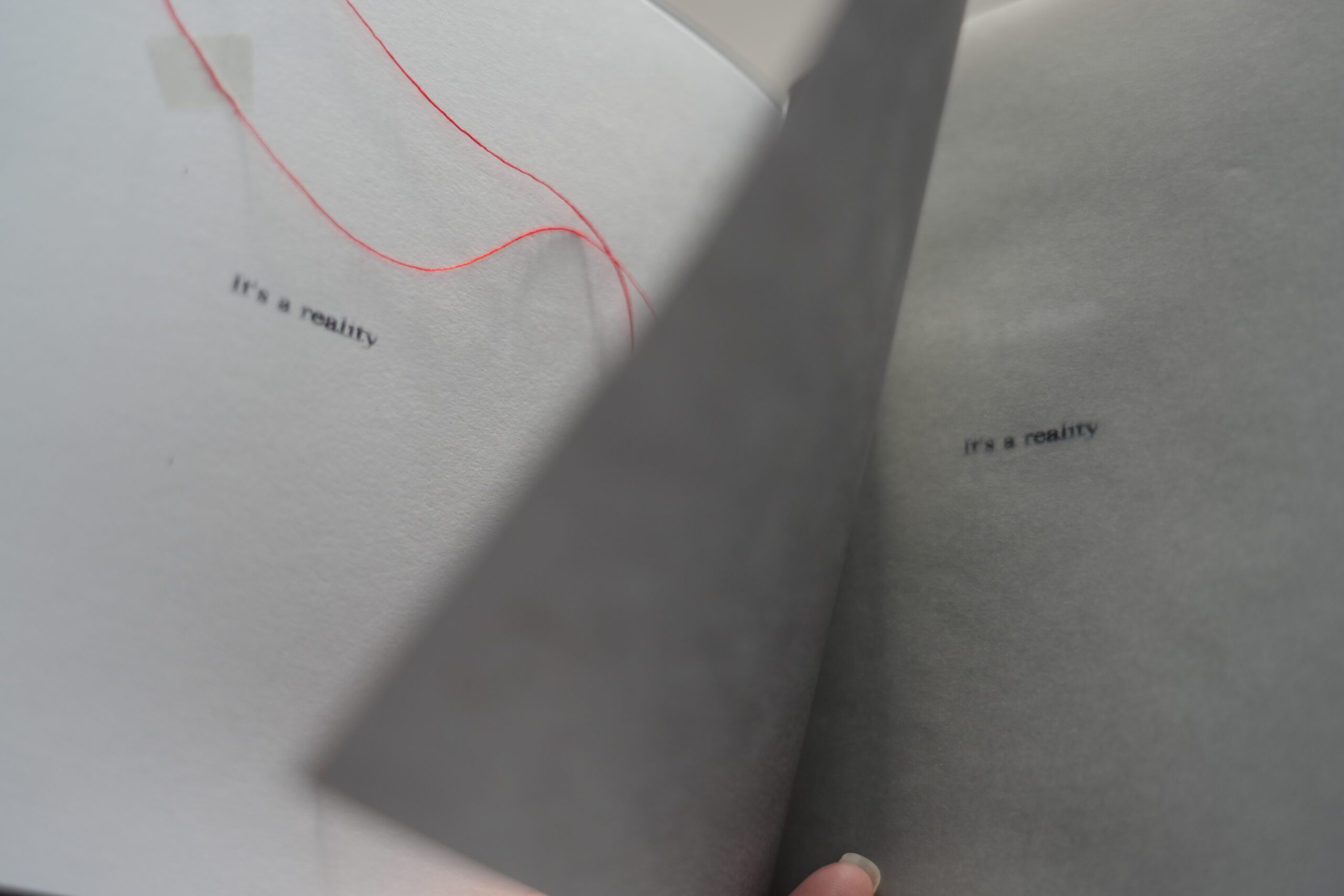
In this section, Ying Ying uses ordinary paper and sulphate paper, alternating between them to show the confusion of being in a dream world and reality at the same time, and at the same time, connecting the pages with a red line to represent the fact that both reality and the dream world exist, only that we can’t tell the difference. At the end of this section, the page eventually returns to ordinary cardboard, representing that we are still living in the real world and have to face the problems in the real world.
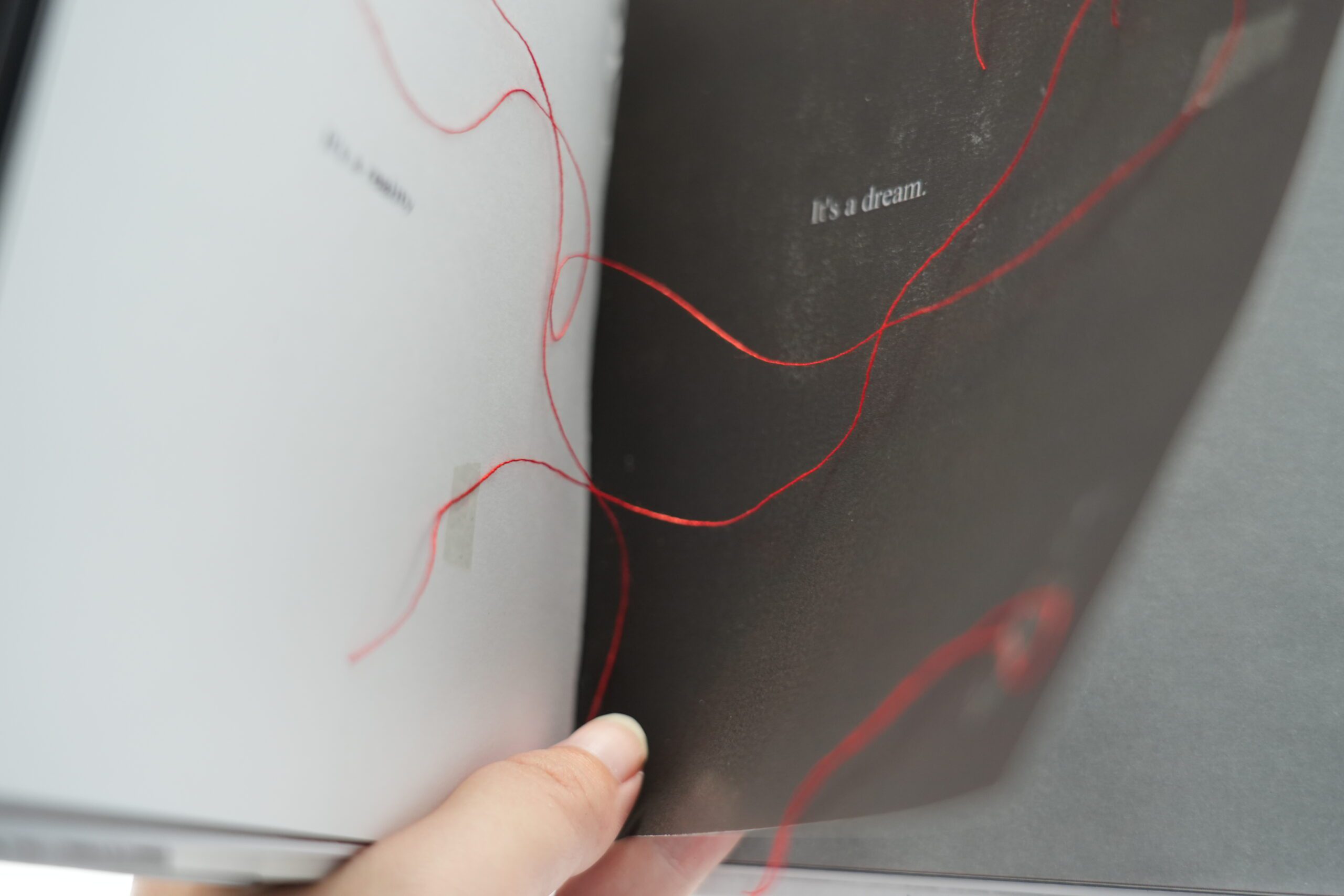
The image is presented in black and white, with only the red-linked cotton threads, adding to the visual effect. Ying Ying used her camera to take this shot in a place where the light and shadows are more robust, allowing the texture of the paper to show through.
Visionary Thinkers
Visionary Creators
Visionary Makers
